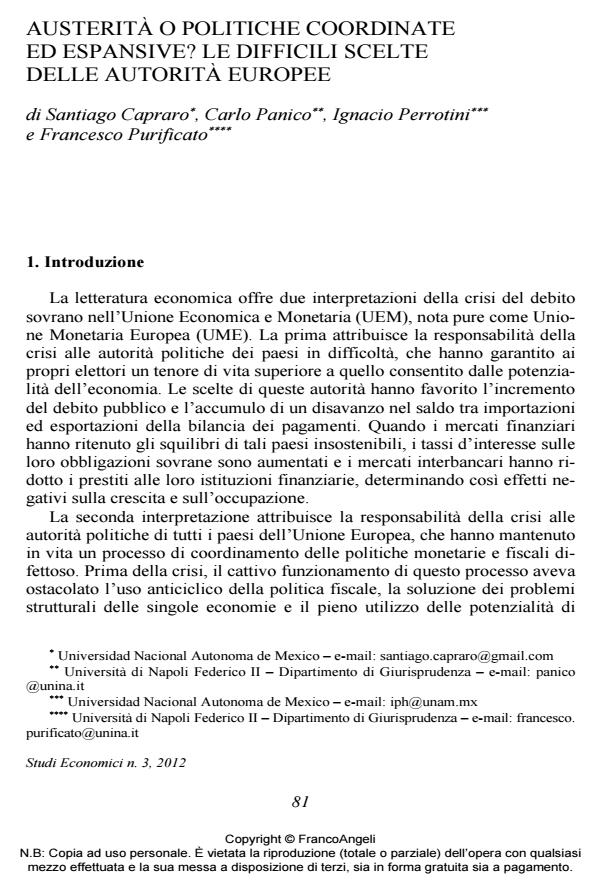Austerità o politiche coordinate ed espansive? Le difficili scelte delle autorità europee
Titolo Rivista STUDI ECONOMICI
Autori/Curatori Santiago Capraro, Carlo Panico, Ignacio Perrotini, Francesco Purificato
Anno di pubblicazione 2013 Fascicolo 2012/108
Lingua Italiano Numero pagine 32 P. 81-112 Dimensione file 691 KB
DOI 10.3280/STE2012-108002
Il DOI è il codice a barre della proprietà intellettuale: per saperne di più
clicca qui
Qui sotto puoi vedere in anteprima la prima pagina di questo articolo.
Se questo articolo ti interessa, lo puoi acquistare (e scaricare in formato pdf) seguendo le facili indicazioni per acquistare il download credit. Acquista Download Credits per scaricare questo Articolo in formato PDF

FrancoAngeli è membro della Publishers International Linking Association, Inc (PILA)associazione indipendente e non profit per facilitare (attraverso i servizi tecnologici implementati da CrossRef.org) l’accesso degli studiosi ai contenuti digitali nelle pubblicazioni professionali e scientifiche
The paper deals with the debt crisis in the euro zone. The literature presents two interpretations of these events. The first attributes the responsibility of the crisis to the political authorities of the countries under attack. They let the citizens live beyond the standard allowed by the economy. This interpretation supports the use of austerity policies to solve the crisis. The second interpretation argues that the political authorities of all the European Union are responsible for the crisis. They kept alive an institutional organization of the coordination process between monetary and fiscal policies, which was known to be faulty. The paper presents theoretical and empirical arguments in favour of the second interpretation. It argues that austerity fails to stabilise the public debt and contends that a coordination process based on effective enforcement and on a European Fiscal Agency can achieve better results by favouring the adoption of coordinated and expansive fiscal policies.
Parole chiave:Monetary Policy, Coordination, Fiscal Policy, Sovereign Debt Crisis in the Economic and Monetary Union
Jel codes:E52, E61, E62, H63
Santiago Capraro, Carlo Panico, Ignacio Perrotini, Francesco Purificato, Austerità o politiche coordinate ed espansive? Le difficili scelte delle autorità europee in "STUDI ECONOMICI " 108/2012, pp 81-112, DOI: 10.3280/STE2012-108002